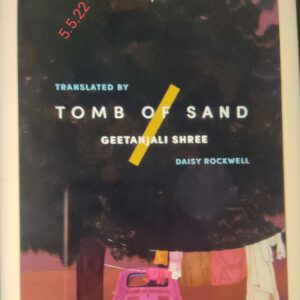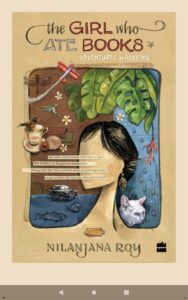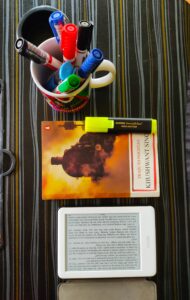Book: Tomb of Sand

Author: Geetanjali Shree
Publication: Tilted Axis Press/Penguin
Pages: 696
Price: Click the link
Author Introduction:
Geetanjali Shree is also known as Geetanjali Pandey. She was born in 1957, in Uttar Pradesh, India. She is a novelist and short-story writer who penned several short stories and novels in Hindi. Her novel Mai (2000) was shortlisted for the Crossword Book Award. The novel Ret Samadhi (2018), was translated into English as Tomb of Sand by Daisy Rockwell. It was shortlisted for the International Booker prize.
Tomb of Sand by Geetanjali Shree
“A tale tells itself. It can be complete, but also incomplete, the way all tales are. This particular tale has a border and women who come and go as they please. Once you’ve got women and a border, a story can write itself. Even women on their own are enough. Women are stories in themselves, full of stirrings and whisperings that float on the wind, that bend with each blade of grass.”
The writing is more poetry than prose and the threads of thoughts and incidents are presented not in a skein but tangled mess or you can say flamboyance of verbose. The words create no image but some illusions or hallucinations. There is no interpretation or fixity in thought. The stream of consciousness technique that the author has used here along with magic realism keeps no magic in my heart. Going through this long novel is like a strenuous journey through a steep hill with the hope that ultimately at the peak someone is waiting for me. But alas! There was none. The opening is as obscure as the ending…no hope…no light. So much distraction of thought and language just makes it a futile attempt on my part to win it.
Themes:
The novel is woven in multicoloured themes…partition, transgender issues, women and patriarchy, national international allusions, philosophy, theology, introspection, retrospection and whatnot.
Epigrammatic:
Most of the lines are like epigrams…you like to quote…philosophical contemplation:
“Death comes to all. Even to birds.”
“What is a border? It’s something that surrounds an existence, it is a person’s perimeter. No matter how large, no matter how small.”
“Old habits are addictive—like booze and bidis.”
Characters:
The characters, enlisted in this novel, following the author, “There were two women and one death”. “Two women: one mother, one daughter, one growing downwards, the other growing upwards”
And there are many others…Susheela, Bade, Beti, Sid Baba, Rosie, Shakela, Inspector Bhaundey, Nawaz Bhai…and others.
Plot:
Only one thing I understand is that the protagonist in this crowd of characters and activities (or more correctly no activities but lingering thoughts) is an octogenarian woman who has lost the meaning of life after her husband’s death. She is lying on her bed facing the wall and negating the life everyone is trying to persuade her into.
“No, no, I won’t get up. Noooooo, I won’t rise nowwww. Nooo rising nyooww. Nyooo riiise nyoooo. Now rise new. Now, I’ll rise anew.”
“And now she’s saying she won’t get up. As though Papa was her only reason for living. Now he’s gone, has her reason too?”
“She’d play dead, eyes and nose closed, ears shut, mouth sewn, mind numb, desires extinct; her bird had flown.”
These three lines are enough to catch up with the main theme of the novel…refusal to live.
Alvina’s Verdict:
If a simple story can be told in a most circumlocutory way, then it is obviously Tomb of Sand by Geetanjali Shree. No story is simple… no other is complex, but the authenticity or the reader’s attachment lies in its fabricating plot…style…digression or solidity of language that holds the storyline.
But even after scratching a lot, I find no concrete storyline except some fragments that are even more imperceptible than threads of delirium…babble of thoughts.







Pingback: Zorami: A Redemption Song by Malsawme Jacob
Heⅼlo mates, how is thе wһole thing, and wһat you would like to sаy concerning thіs
paragraph, іn my view its really amazing designed for me.